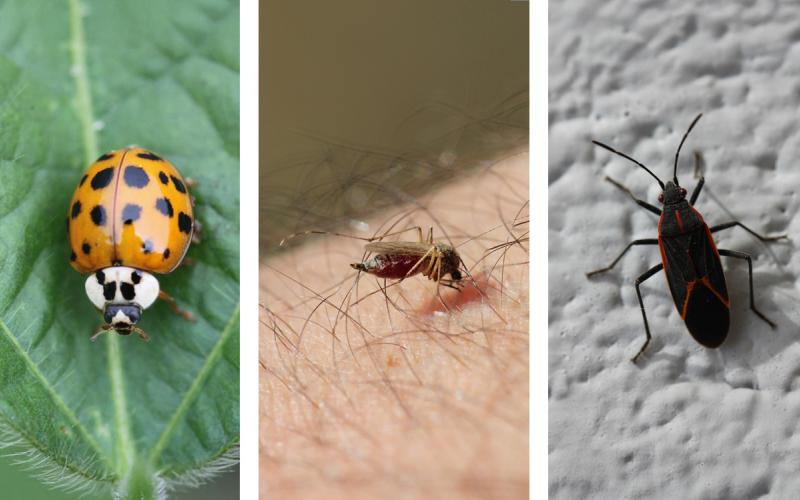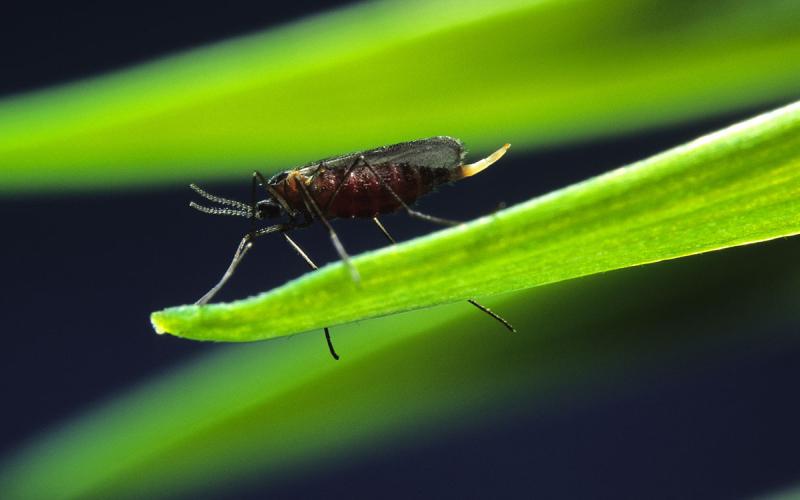Written collaboratively by Anna Hagemann, Madalyn Shires, Connie Strunk, and Adam Varenhorst.
As wheat harvest proceeds, it won’t be long until winter wheat planting is underway in South Dakota. It is important to note that disease transmission of Wheat streak mosaic virus (WSMV) during the fall is a greater threat to yield than spring transmission. The continued reproduction of the virus in alternate hosts develops a condition called the green bridge. Wheat streak mosaic virus causes a disease among grasses within the Poaceae family called wheat streak mosaic disease complex. This disease is termed as a “complex” because there are multiple viral pathogens that are responsible for causing wheat mosaic symptoms, however the most common one in South Dakota is WSMV. The other viruses commonly found in wheat are High Plains wheat mosaic virus and Triticum mosaic virus. Wheat steak mosaic virus is transmitted by the wheat curl mite. The WSMV is often harbored in late maturing spring wheat, alternative hosts, or volunteer wheat in late summer with less noticeable symptoms. These same plants often serve as hosts for the wheat curl mite. Unfortunately, the decline of the alternative hosts, which drives the movement of mites to new hosts, generally lines up with the emergence of winter wheat. As a result, WSMV and other viruses in the disease complex are also transmitted into the new crop through feeding, therefore creating the green bridge effect. The green bridge effect is also persistent in spring wheat where wheat curl mite moves from winter wheat to spring wheat in the spring. Spring wheat has little to no resistance to WSMV.
To effectively reduce WSMV, it is important to manage the green bridge effect to slow spread of disease in newly emerging wheat fields.
Wheat Curl Mite and Transmission
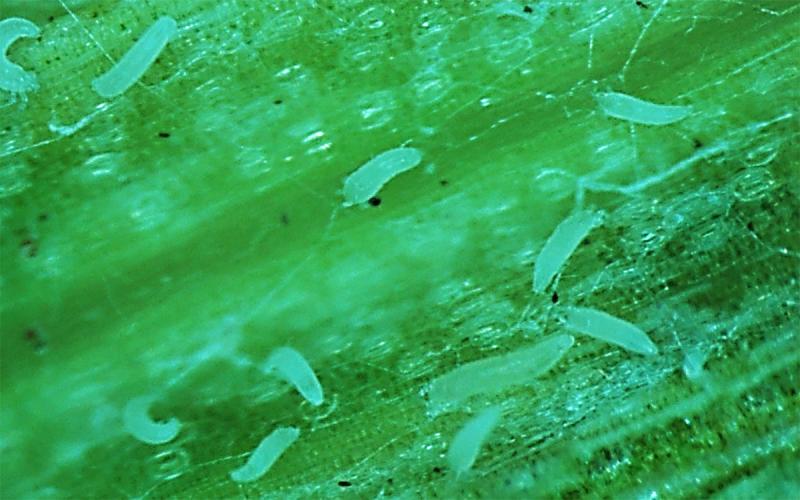
Wheat streak mosaic virus (and other viruses in the disease complex) transmission occurs when wheat curl mites that were previously feeding on infected plants disperse to healthy plants and begin feeding. The WSMV remains active in the wheat curl mite mid and hind guts for seven to nine days after acquisition. As a result of their limited movement capabilities, wheat curl mites rely on wind dispersal to find new host plants. This results in a random distribution of infected plants in wheat fields. Wheat curl mites require live plant tissues for survival, but this isn’t generally an issue for them as their alternative hosts are common. The alternative hosts include other crops such as corn, sorghum, and millet. In addition, wheat curl mites can also use weedy grasses including jointed goatgrass, field sandbur, barnyard grass, crabgrass, cheat grass, downy/Japanese brome, and volunteer wheat as hosts. When the quality of their host begins decline due to poor plant health or senescence, they move to areas of the plant with wind currents and stand upright to get carried off in the wind. Wheat curl mites normally infest field edges first as these act as natural wind barriers. In some cases, the wheat curl mites may be distributed several miles away from the original field. Any life stage of the wheat curl mites can overwinter and with snow cover can survive temperatures below freezing. Once temperatures begin to warm up in the spring, the wheat curl mites become active again and continue their life cycle, and ultimately, continue the disease cycle. The wheat curl mites reproduce rapidly at temperatures between 75-80 °F. There are no miticidal recommendations for wheat curl mite population reductions and managing the green bridge is the only recommendation available for wheat curl mite management. For identification of wheat curl mites please see the article, Which mite is it? Identifying the mites in wheat fields.
Symptoms
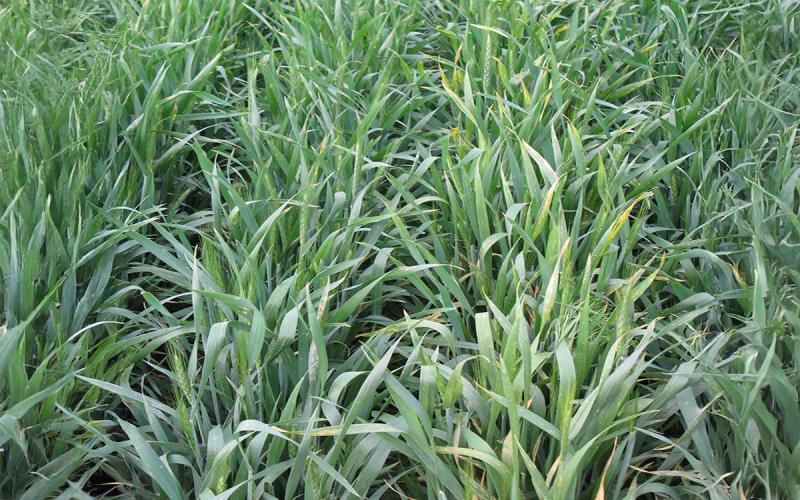
Wheat streak mosaic disease presents itself with elongated chlorotic stripes along the venation of the leaves (Figure 1 and 2). The lesions slowly take over the surface of the leaf and turn darker with time. The plants will become stunted and plant growth will slow, delaying tiller production (Figure 3).
It is important to note that Wheat curl mite also transmits High Plains wheat mosaic virus and Triticum mosaic virus along with WSMV in several instances.
Lower temperatures may reduce the prevalence of WSMV due to less feeding time for mites while higher temperatures may increase disease as the mites have longer to feed and transmit the virus(es); regardless, the disease may persist under all conditions.
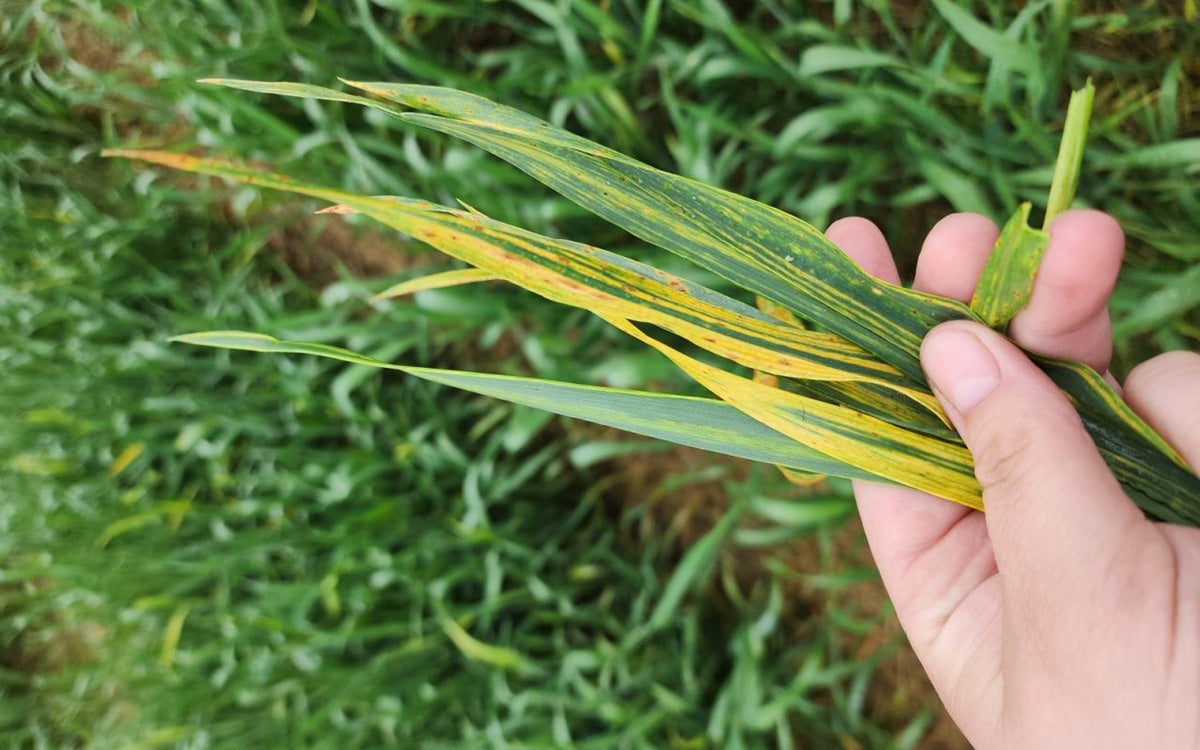
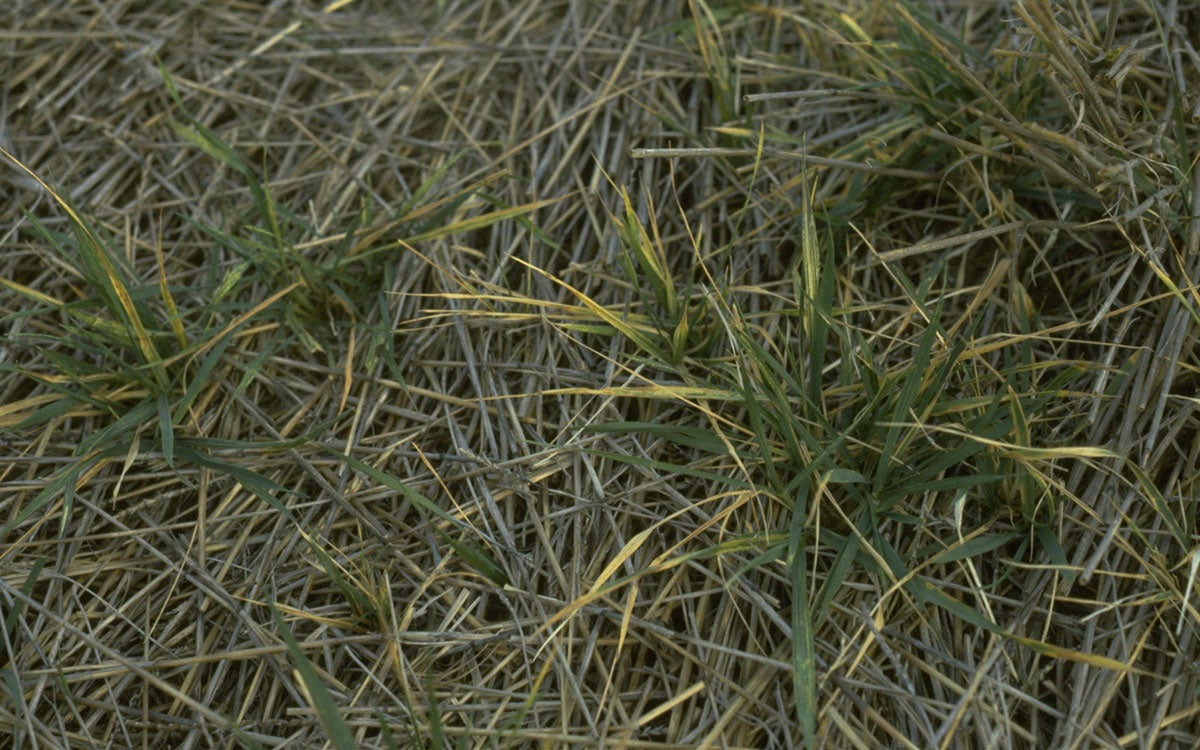
Managing the Green Bridge
The green bridge is the literal plant tissues that are present during the period of spring wheat harvest and winter wheat planting. The green bridge aids in the transmission of the virus between one crop to the following crop, moving further in the next growing season. In order to prevent the spread of the virus, the green bridge must be broken. There are multiple avenues that can be taken to dimmish the green bridge, but work best when used together.
- The planting date of winter wheat should be delayed to mid to late September when wheat curl mite populations are lower. SDSU Winter Wheat Breeding program recommends no earlier than September 15th to September 20th. Delayed planting dates will also reduce the risk of Hessian fly infestation.
- There should be ample time between alternative host termination and the next planting. All volunteer wheat and grasses should be terminated following the harvest of spring wheat. There should be a two-week window between herbicide applications, and the planting of winter wheat to ensure that termination was successful.
- Herbicides can be very effective at managing WSMV hosts. Glyphosate (i.e., Roundup) can kill volunteer wheat and grass weeds carrying mites. For glyphosate specifically, there should be a 14-day window before planting the following wheat crop as mite population will temporarily increase since they will be leaving their previous hosts. In addition, glyphosate has no soil residual activity that can injure crops after harvest.
- Environmental and weather patterns should be analyzed when determining the proper periods to plant. Since mites travel primarily by wind, be sure to understand wind direction when planting your crops. If a neighboring field has just harvested a wheat crop or mowed a pasture area, be prepared to manage alternate grassy hosts as mites may move into your crop. Temperature is also important. Mite production is highest at 75 degrees F to 80 °F. When temperatures reach lows of 50 °F, mite reproduction slows down. Therefore, you must be aware of the impact of increased fall temperatures that occur for a prolonged duration as it favors the disease.
- Genetic resistance is equally important to reducing WSMV. Plant varieties that have genetic resistance to WSMV.
Identification
Correctly identifying this disease or any other fungal, bacterial, or viral disease is extremely important, as it aids in management decisions. Please send plant disease questions to SDSU Extension Plant Pathology Specialist Madalyn Shires or SDSU Extension Plant Pathology Field Specialist Connie Strunk.
Samples can also be sent to the SDSU Plant Diagnostic Clinic. The clinic’s mailing address is 1148 Medary Ave, 2207-D, 1451 Stadium Road, Brookings, SD 57007-1090 and the physical address for sample drop off is Berg Ag Hall Room 203 (business hours) or 001 (after hours and weekends). For more information, visit the SDSU Plant Diagnostic Clinic website.
References
- Manage the green bridge before planting winter wheat this fall to reduce wheat streak mosaic risk, Montana State University.
- Wheat streak mosaic virus: Early control of volunteer is crucial, Kansas State University.
- Pre-Harvest Hail across Western Nebraska Necessitates Breaking the Green Bridge, University of Nebraska-Lincoln.
- Wheat Curl Mite, Colorado State University.

